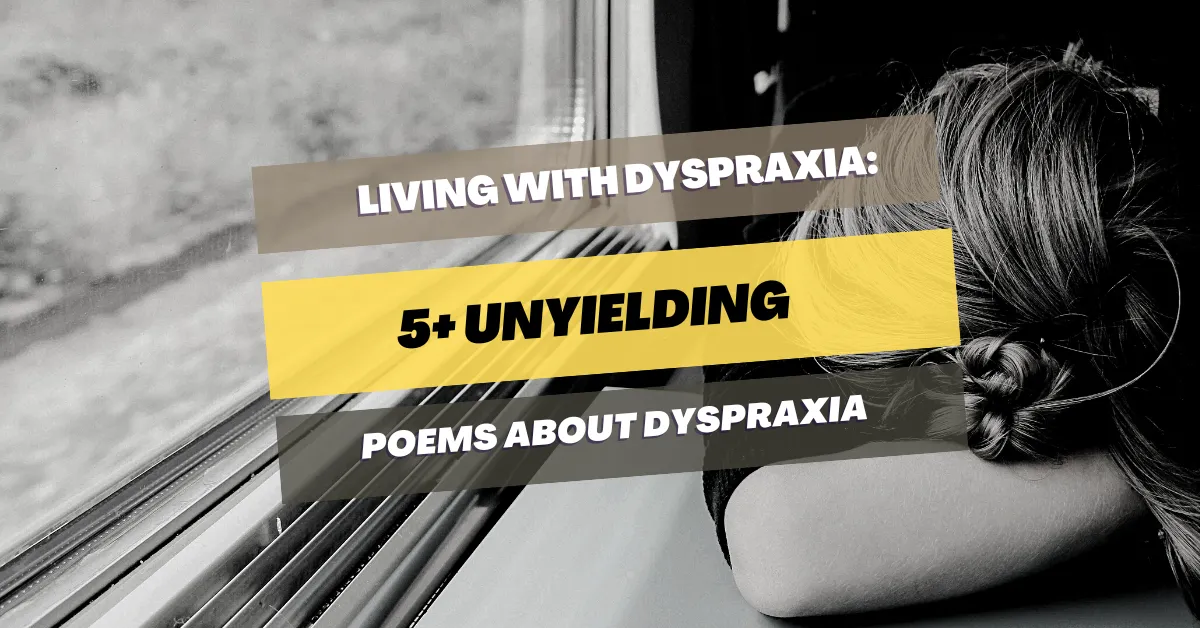5+ Unyielding Poems About Dyspraxia: Living With Dyspraxia
There are many poems about dyspraxia that highlight the challenges and difficulties faced by people with the condition. But there are also poems that celebrate the strengths and abilities of dyspraxic people.
This collection features both types of poems, giving a broad overview of how dyspraxia is viewed and experienced. Whether you’re a dyspraxic person yourself or know someone who is, these poems offer a unique insight into what it’s like to live with this neurological disorder.
Conclusion
There are many poems about dyspraxia that highlight the challenges and difficulties faced by people with the condition. But there are also poems that celebrate the strengths and abilities of dyspraxic people.
This collection features both types of poems, giving a broad overview of how dyspraxia is viewed and experienced. Whether you’re a dyspraxic person yourself or know someone who is, these poems offer a unique insight into what it’s like to live with this neurological disorder.

